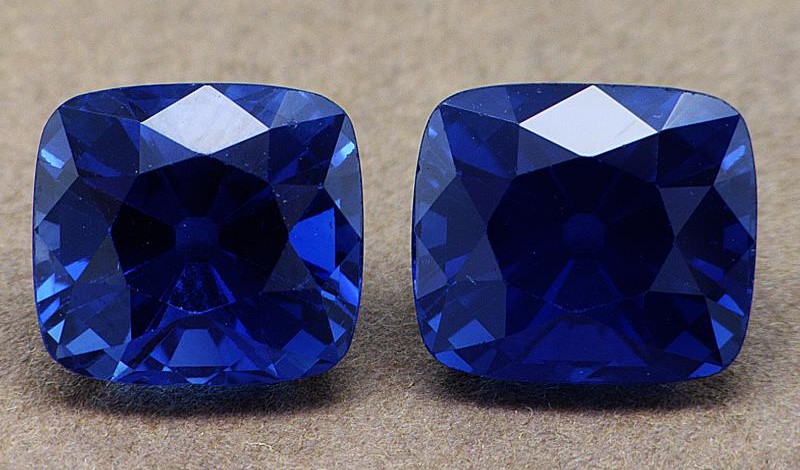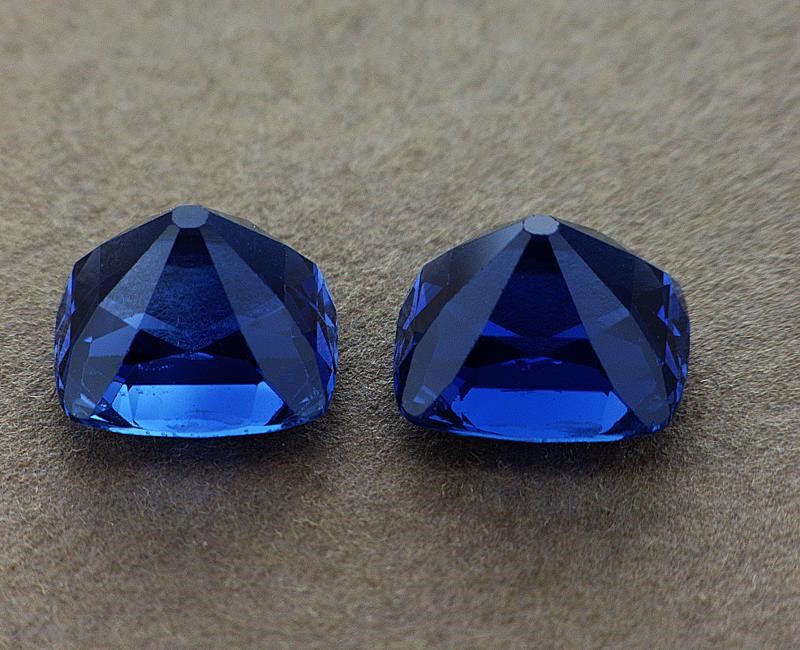Sometimes you can guess that a sapphire comes from Kashmir just with a glance at its specific cut.
This cut is typical of old European standards and was developed in the beginning of the 20th century.
When mining started in Kashmir, Europe had been famous for a while for its lapidary know-how, especially thanks to the invention of corundum jewel-lined pivot in the Jura region. As a consequence, a lot of rough stones were sent to Europe to be cut under the control of Mr Modiano, a friend of the Maharaja of Kashmir.
A Kashmir sapphire generally gets cut in a cushion shape, with a brilliant cut on the crown and a step cut on the pavilion. The culet is faceted as well.
What differentiates this sapphire from the others? Under a microscope, white zones will often be observed, and those are renowned for giving the crystal its famous silky aspect.
Stone cutters specially chose to cut big and flat facets on the pavilion because of this cloudy appearance, so that more light gets into the crystal. The main objective of the crown’s brilliant cut is to emphasize the fire coming from the pavilion’s big facets.
Some sapphires from other regions than Kashmir have the same kind of cloudy crystallization and can be cut in the same way, in order to be confused with the real Kashmir material.
This cut is usually never used in big sapphires cutting centers, such as Sri Lanka, Myanmar and Madagascar.


